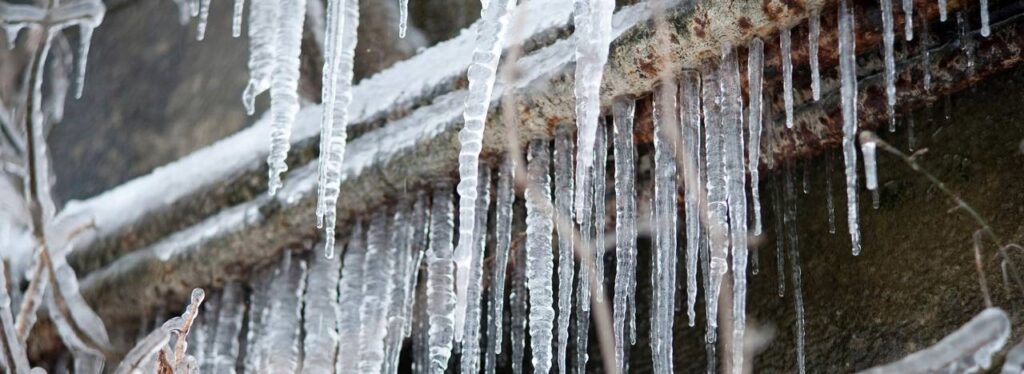Essential Tips for Avoiding Frozen Plumbing in Cold Weather Conditions
Essential Tips for Avoiding Frozen Plumbing in Cold Weather Conditions
Blog Article
What are your opinions about How to prepare your home plumbing for winter weather?

Cold weather can wreak havoc on your plumbing, especially by freezing pipelines. Below's just how to stop it from happening and what to do if it does.
Introduction
As temperatures decrease, the risk of icy pipes rises, possibly leading to pricey repair services and water damage. Comprehending how to prevent icy pipes is vital for homeowners in cold environments.
Understanding Frozen Pipelines
What causes pipes to ice up?
Pipelines freeze when exposed to temperature levels listed below 32 ° F (0 ° C) for expanded durations. As water inside the pipelines ices up, it expands, putting pressure on the pipe wall surfaces and potentially causing them to burst.
Threats and problems
Frozen pipelines can cause supply of water disruptions, home damage, and expensive repair work. Burst pipelines can flooding homes and trigger comprehensive structural damages.
Indications of Frozen Pipeline
Determining frozen pipelines early can avoid them from breaking.
Exactly how to recognize frozen pipelines
Look for reduced water flow from taps, uncommon odors or sounds from pipelines, and noticeable frost on subjected pipes.
Avoidance Tips
Shielding susceptible pipes
Wrap pipelines in insulation sleeves or make use of warmth tape to shield them from freezing temperatures. Focus on pipes in unheated or exterior locations of the home.
Home heating strategies
Maintain indoor areas properly heated, especially locations with pipes. Open cabinet doors to permit cozy air to distribute around pipes under sinks.
Shielding Outside Plumbing
Yard pipes and outdoor faucets
Detach and drain yard hose pipes prior to wintertime. Mount frost-proof faucets or cover outdoor taps with protected caps.
What to Do If Your Pipes Freeze
Immediate activities to take
If you believe frozen pipelines, maintain taps open up to soothe pressure as the ice thaws. Utilize a hairdryer or towels taken in hot water to thaw pipelines slowly.
Long-Term Solutions
Architectural adjustments
Consider rerouting pipelines far from exterior walls or unheated areas. Add added insulation to attics, cellars, and crawl spaces.
Upgrading insulation
Buy high-grade insulation for pipes, attics, and wall surfaces. Correct insulation assists preserve regular temperatures and lowers the threat of frozen pipes.
Final thought
Avoiding frozen pipes needs positive measures and quick actions. By understanding the causes, indications, and preventive measures, property owners can safeguard their plumbing during cold weather.
5 Ways to Prevent Frozen Pipes
Drain Outdoor Faucets and Disconnect Hoses
First, close the shut-off valve that controls the flow of water in the pipe to your outdoor faucet. Then, head outside to disconnect and drain your hose and open the outdoor faucet to allow the water to completely drain out of the line. Turn off the faucet when done. Finally, head back to the shut-off valve and drain the remaining water inside the pipe into a bucket or container. Additionally, if you have a home irrigation system, you should consider hiring an expert to clear the system of water each year.
Insulate Pipes
One of the best and most cost-effective methods for preventing frozen water pipes is to wrap your pipes with insulation. This is especially important for areas in your home that aren’t exposed to heat, such as an attic. We suggest using foam sleeves, which can typically be found at your local hardware store.
Keep Heat Running at 65
Your pipes are located inside your walls, and the temperature there is much colder than the rest of the house. To prevent your pipes from freezing, The Insurance Information Institute suggests that you keep your home heated to at least 65 degrees, even when traveling. You may want to invest in smart devices that can keep an eye on the temperature in your home while you’re away.
Leave Water Dripping
Moving water — even a small trickle — can prevent ice from forming inside your pipes. When freezing temps are imminent, start a drip of water from all faucets that serve exposed pipes. Leaving a few faucets running will also help relieve pressure inside the pipes and help prevent a rupture if the water inside freezes.
Open Cupboard Doors
Warm your kitchen and bathroom pipes by opening cupboards and vanities. You should also leave your interior doors ajar to help warm air circulate evenly throughout your home.

I recently found that page about How to Prevent Your Pipes From Freezing while doing a search on the web. If you enjoyed reading our blog entry if you please don't forget to pass it around. Thank you so much for going through it.
Call Today Report this page